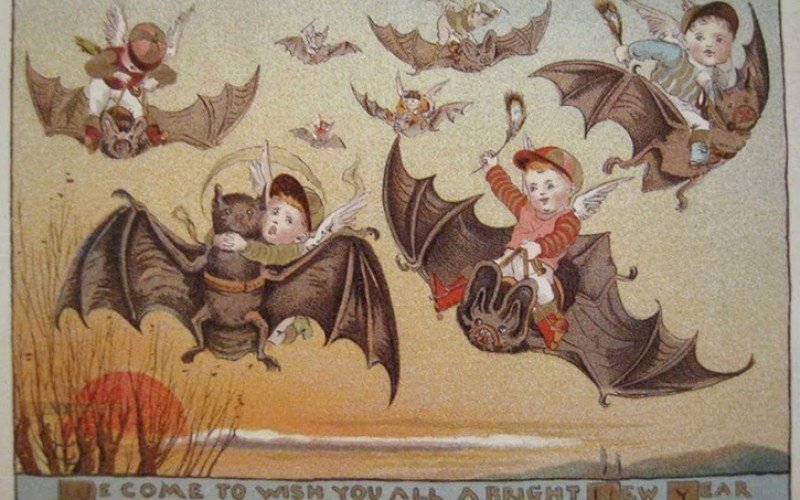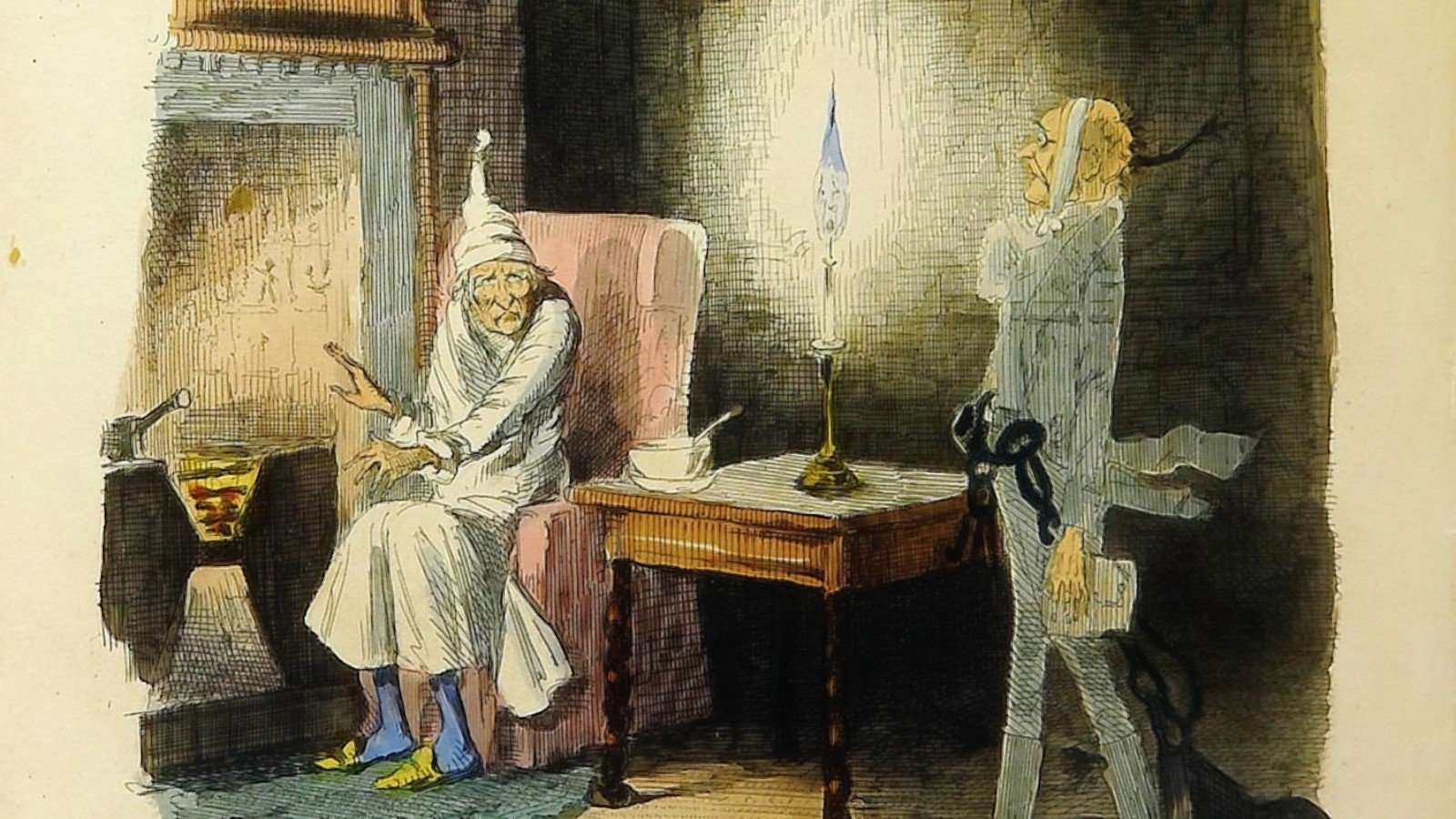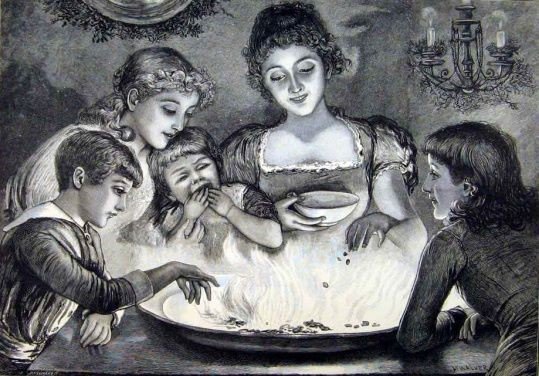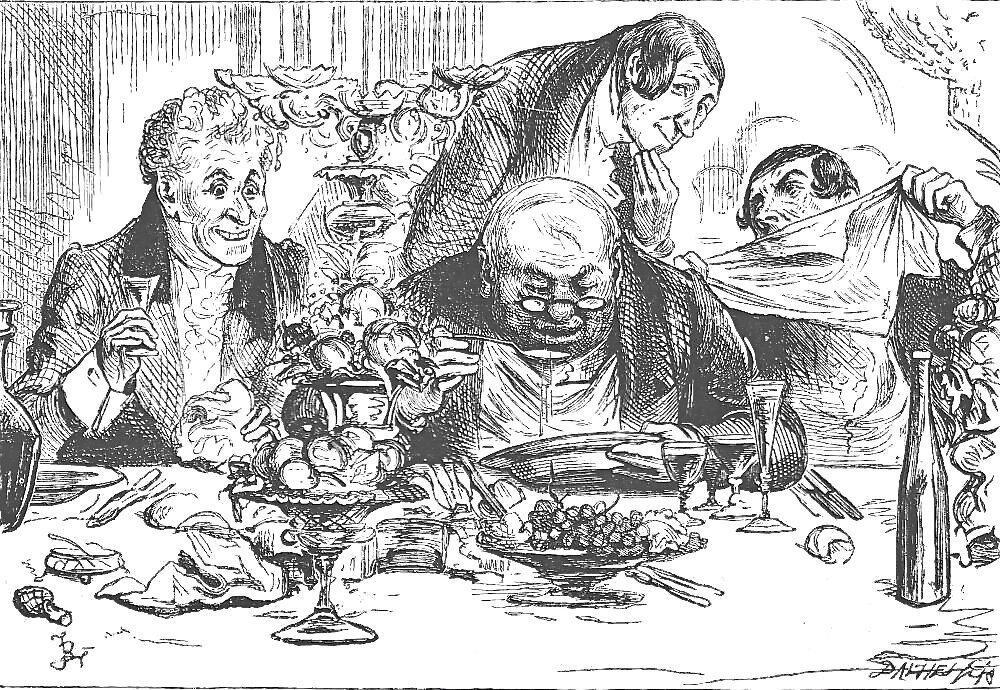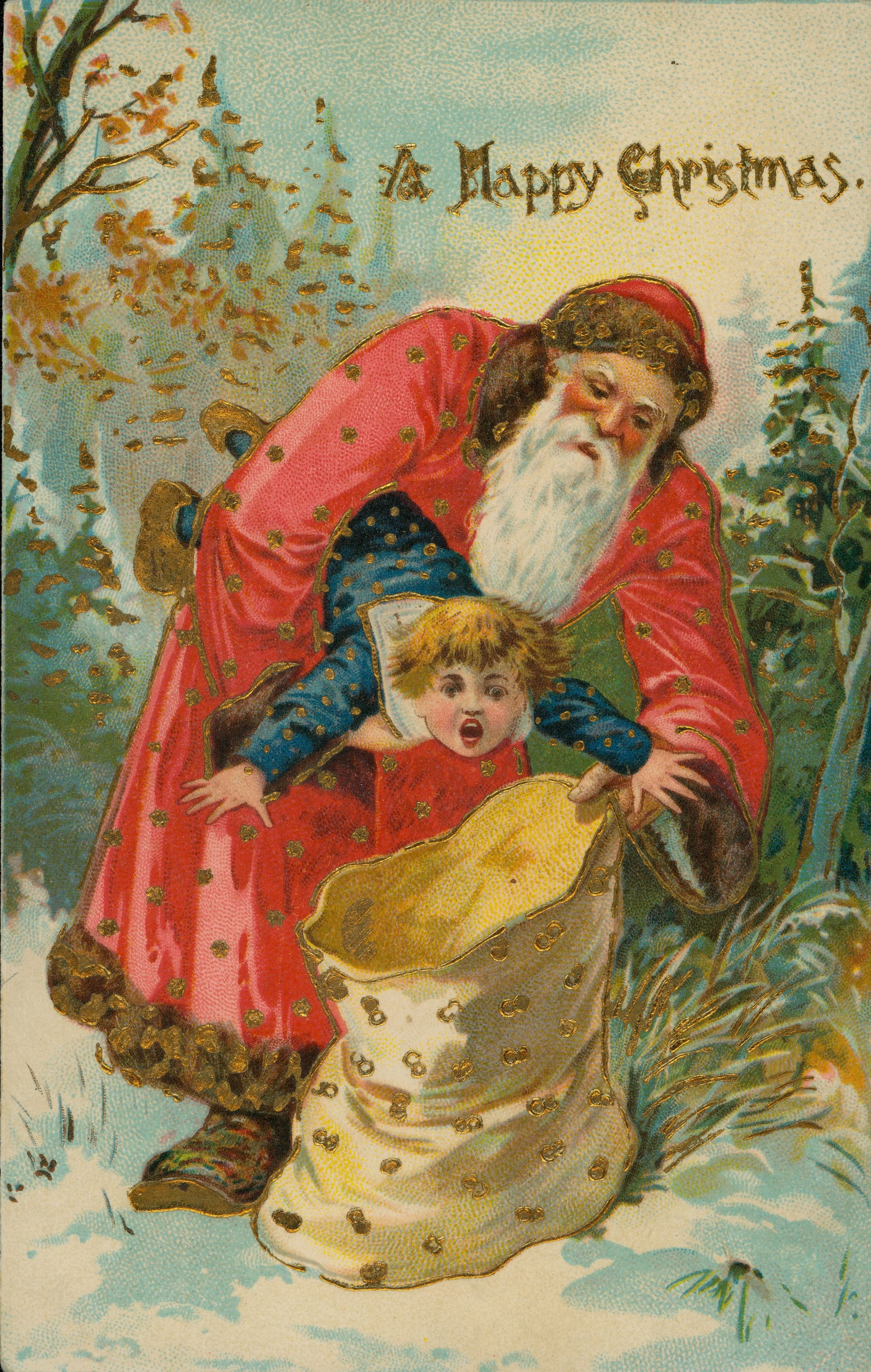Top 10 Secretly Creepy Victorian Christmas Traditions
The Victorians were complicated. Members of high society in the late 1800s were forced to conform by rules that seem absurd to us today (and did to non-society folks back then, too.) How they dressed, how they spoke, what they ate, how they ate it, how they visited with friends… conformity was the price for being good-standing members of the community.
That doesn’t mean they didn’t have a dark side, though. When the Victorians weren’t taking their evening promenades or attending lavish balls, they were dabbling in the darker side, like taking post-mortem photographs of their dead loved ones, conducting seances, and putting bells in their coffins just in case they were buried alive.
Their Christmas traditions also ran the gamut from cool, mainstream traditions that the normies still carry on today, to the macabre and weird customs that appeal to the rest of us. In honor of this fashionable, innovative, yet highly questionable period of history, we put together a list of our favorite Victorian Christmas traditions (and their strange and grotesque underpinnings.)
Tighten up your candy-striped corsets, things are about to get weird.
1. Christmas Trees
The Christmas tree tradition gained popularity after Queen Victoria and Prince Albert displayed a beautifully decorated tree in their home in the 1840s. Victorian families (mostly) adorned their trees with handmade ornaments, candles, ribbons, fruits, and small gifts. This tradition emphasized warmth and family unity.
The Dark Side: They used real candles to light the trees. And since the Victorians were’t super keen on safety regulations, it was pretty common for a tree to catch fire. It would be a shame if that happened and they lost all of their (other) perfectly normal, not at all creepy ornaments, like doll heads or taxidermied animals.
Photo from: sewhistorically.com
2. Christmas Cards
The first commercial Christmas card was designed in 1843 by Henry Cole and featured a cheerful family dinner. Cards became a staple of the holiday, often showcasing snowy scenes, holly, and festive greetings, symbolizing goodwill and connection.
The Dark Side: Victorian Christmas cards often included bizarre or unsettling imagery, like dead birds, anthropomorphic animals in sinister scenarios, or surreal scenes like frogs in duels. Take that, Hallmark!
Photo from: artuk.org
3. Caroling and Wassailing
Caroling became a beloved Christmas tradition, with groups singing familiar hymns like Silent Night or O Come All Ye Faithful in public squares or door-to-door to spread holiday cheer. It was a community-focused activity that embodied the spirit of the season.
The Dark Side: Wassailing, which is an older form of caroling, was all about shenanigans. Groups of wassailers, often including lower-class revelers, would demand food, drink, or money in exchange for their songs, sometimes issuing veiled threats of bad luck to those who refused.
4. Family Gatherings and Ghost Stories
Victorian families loved to gather around the fireplace during Christmas to share meals, exchange gifts, and tell stories. This reinforced the holiday's theme of togetherness and warmth during the cold winter months, and there’s no better way to say Happy Holidays than forced family fun.
The Dark Side: Christmas Eve was also a prime time for telling ghost stories. These tales often featured haunted houses, restless spirits, and terrifying moral lessons to serve as a reminder of mortality amid celebration. Dickens’ A Christmas Carol is the most famous Victorian holiday ghost story.
Photo from: news.ucdenver.edu
5. Festive Games
Parlor games were a staple of Victorian Christmas gatherings, providing lighthearted, cell-phones-don’t-exist entertainment for all ages. They played games like charades, blind man's buff, and musical chairs, which helped to bond family and friends during the holiday. (See forced family fun above.)
The Dark Side: "Snapdragon" was one of the more dangerous and eerie games. Raisins were placed in a shallow bowl of brandy, which was then set on fire. Players snatched the flaming raisins and ate them, risking burns for the thrill of the game. The flickering flames in a dimly lit room added a ghostly ambiance to the activity.
Photo from: civilwartalk.com
6. Gift-Giving
Gift-giving became an essential part of Christmas in the Victorian era, inspired by the wise men’s gifts in the Nativity story and popularized by Queen Victoria's family traditions. Gifts were often thoughtful and practical, such as handmade toys, clothing, or books. For children (and likely most adults), receiving gifts was as magical back then as it is today.
The Dark Side: Victorians with a taste for the macabre sometimes gave gag or novelty items that included lovely sentiments like fake severed fingers, animal bones to darkly humorous knick-knacks. (Sounds like our kind of gift exchange!)
7. Decorations
Decorating homes with greenery such as holly, ivy, and mistletoe was a widespread tradition. These natural elements symbolized life, renewal, and fertility during the dark winter months. Mistletoe, in particular, was associated with romantic kisses under its branches. How pagan of them!
The Dark Side: Mourning wreaths made from human hair were a peculiar Victorian decorative practice. While originally used to memorialize loved ones, these macabre creations sometimes found their way into Christmas decor. Just picture it: Grandma’s gray locks woven around the antlers of the reindeer that ran her over.
8. Acts of Charity
Inspired by Christian teachings and Charles Dickens’ A Christmas Carol, the Victorian Christmas emphasized goodwill and helping those in need. Some families donated to charities, provided food baskets for the poor, or hosted meals for the less fortunate as part of their holiday traditions.
The Dark Side: Some of these acts of charity were just that — an act. Wealthy families might host charity events, but they were as much about flaunting their status as helping the poor. File this one under “Victorian traditions that are still practiced today.”
9. Holiday Feasts
Christmas feasts were central to Victorian celebrations, featuring dishes like roast goose, turkey, plum pudding, and mince pies. For many, the meal was a symbol of abundance and togetherness, bringing families around the table.
The Dark Side: Victorian cooks sometimes prepared elaborate "mock" dishes as a substitute for pricier ingredients. For example, Mock Turtle Soup was made from calf’s head to mimic the texture and flavor of turtle meat. Save the neck for me, Clark!
Photo from: etiquetteer.com
10. Winter Celebrations and the Yule Log
The Yule log, a remnant of pre-Christian winter solstice traditions, was adopted by the Victorians as a symbol of warmth and good fortune. Families would decorate the log with greenery, bless it, and burn it in the hearth, often saving a fragment for next year’s fire as a good luck charm.
The Dark Side: The Yule log’s origins in pagan rituals gave it an air of mystery and superstition. For some Victorians, burning the log wasn’t just about warmth—it was believed to ward off evil spirits or ensure fertility and prosperity, blending festive cheer with occult-like overtones.
Bonus: Santa Claus
Our list wouldn’t be complete without mentioning the man in red — the Victorian era was pivotal in shaping the modern image of Santa Claus. Our modern-day image of Santa was Inspired by the Dutch "Sinterklaas" and popularized in England by the 1823 poem "A Visit from St. Nicholas (‘Twas the Night Before Christmas)". Over time, he evolved into a jolly, bearded figure in a red suit. He became a symbol of generosity and joy, delivering presents to well-behaved children on Christmas Eve.
The Dark Side: Santa wasn’t all fun and games and gifts in the Victorian era. Some illustrations portrayed him as a shadowy, mysterious figure who watched children constantly, emphasizing moral judgment and instilling fear rather than delight. This darker portrayal aligned with the Victorian love of moral tales, where Santa could serve as both a rewarder of good and a punisher of the naughty, similar to his older European counterparts.
Photo from: english-heritage.org.uk
Do you put a spooky spin on your 21st-century holiday traditions? Let us know!


